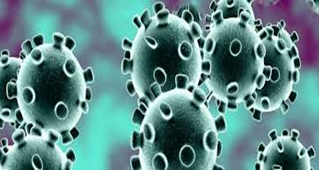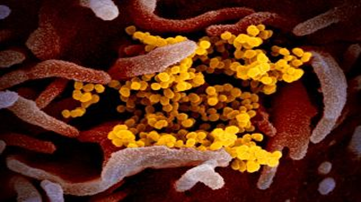Call Us Today!
08135762586, 08179552479

May 31, 2020 | Author | 0 Comments
As a way of contributing to the global efforts towards
winning the war against Covid-19, the Department Microbiology, Chrisland
University Abeokuta has released an article containing information about the
etiology, transmission, diagnosis, control and public responsibility of the
virus.
BACKGROUND
Coronavirus Disease 2019 (COVID-19) is presently a
global treat infecting more than 3 million people worldwide. The etiological
agent is the novel coronavirus that emerge in Wuhan, China in December, 2019
(WHO, Novel Coronavirus–China. 2020).
Presently the disease is at the community-level of transmission.
This article aims to provide evidence on the etiology,
transmission, diagnosis and prevention ofCOVID-19. It will also serve as a form
of sensitization to the public and probably support government decision
making.
Etiology
Coronavirus belongs to the family Coronaviridae and
genera Betacoronaviruses. Coronavirus derived its name from Corona which
represents the crown-like spikes on the outer surface of the virus when viewed
under electron microscope (Figure 1). It is an enveloped, positive-sense,
single-stranded RNA virus of zoonotic origin but can
be transferred from animals to humans and from person to person. Corona
viruses are tiny in size ranging from 65–125 nm in diameter. The subgroups of
corona virus’s family are alphacoronaviruses, betacoronaviruses,
gammacoronaviruses and deltacoronaviruses. Coronaviruses were thought to infect
only animals until the world witnessed a Severe Acute Respiratory Syndrome
(SARS) outbreak caused by SARS-CoV, 2002 in Guangdong, China (Zhong et al., 2003). A decade later, another
human coronavirus, known as Middle East respiratory syndrome coronavirus
(MERS-CoV), 2012 caused an endemic infection in Middle Eastern countries (Wang et al., 2013). The third human
coronavirus is what the world is battling with now. It originated from Wuhan,
China. The name was initially referred to as novel coronavirus 2019
((2019-nCov).
According to the World Health Organization (WHO), the
reference name for the novel coronavirus is Severe
Acute Respiratory Syndrome Coronavirus 2 (SARS-CoV-2).

Figure 1. Electron
microscope image ofSARS-CoV-2

Figure 2. SARS-CoV-2 (yellow)
among human cells (pink).
Source:NIAID-RML (Rocky Mountain
Laboratories (RML), National Institute of Allergy and Infectious Diseases US).
TRANSMISSION
Coronavirus has 3 different routes of transmission
1. SymptomaticSymptomatic
transmission: This is the transmission from infected
individuals, who are experiencing symptoms to those in direct contact with
them, their respiratory droplets and contaminated surfaces and objects. It has
been reported that transmission is rapid within the first 3 days of disease
onset when the virus is densely disseminated through the upper respiratory
tract most importantly the nose and throat (Lauer et al., 2020; Liu et al.,
2020).
Pre-symptomatic
transmission: The period of exposure to the virus, to
the subclinical stage where pathological changes occur but without symptom, to
the clinical changes when symptoms begin to occur is referred to the incubation
period which is 14 days for COVID-19. The pre-symptomatic transmission is
possible at subclinical stage when no symptom is shown in infected persons.
Pre-symptomatic transmission has been documented through contact tracing
efforts and enhanced investigation of clusters of confirmed cases (Yu et al., 2020). Thus, the possibility that COVID-19 infected
individuals could transmit the virus before significant symptoms develop.
Asymptomatic
transmission: An
asymptomatic laboratory-confirmed case is a person infected with COVID-19 who
does not develop symptoms. Asymptomatic transmission refers to transmission of
the virus from a person, who does not develop symptoms. Asymptomatic
laboratory-confirmed cases have been reported as part of contact tracing effort
by the NCDC, and other infectious disease control agencies. However, no
asymptomatic transmission has been documented till date but it does not exclude
the likelihood of transmission.
DIAGNOSIS
Clinical manifestations of COVID-19 include but not
limited to fever, cough, sore throat, rhinorrhoea, shortness of breath, muscle
ache, confusion, headache, chest pain, diarrhoea, nausea and vomiting. The
major diagnosis is the use of real-time fluorescence (RT-PCR) to detect the
positive nucleic acid of SARS-CoV-2 in sputum, throat swabs, nose swabs and
secretions of the lower respiratory tract samples. However, several kits have
been developed for rapid diagnostic test that depend principally on serology
detection of viral protein.
COVID-19 serology testing depends on targeted
antibodies binding to SARS-CoV-2-specific antigens. Blood serum of suspected
cases is introduced to a testing device that contains copies of viral antigen.
Capillary action draws the blood through the device where it mingles with the
antigens. If the suspected individuals have developed antibodies against SARS-CoV-2,
the corresponding antibodies will recognize and bind to the antigens,
indicating past exposure to SARS-CoV-2.
Nigerian government needs to be proactive in
supporting researchers to develop such kit or approve existing kit for active
detection of asymptomatic carrier of SARS-CoV-2 in the phase of community
transmission in the country.
PREVENTION AND
CONTROL
Currently there is no approved nationally or
internationally certified treatment or vaccines to combat COVID-19. However, many drug candidates are undergoing
clinical trials for treatment evaluation.The main treatment employed in
different countries is symptomatic treatment and supportive care. While
researchers are still working on the treatment regimen, it should be clear that
COVID-19 is not a death sentence in all cases and that preventive measures need
to be strictly adhering to. Proper hygiene is the mainstay of prevention.
Thus, to prevent the spread of COVID-19:
·
Clean your hands often. Use soap and
water, or alcohol-based sanitizer.
·
Maintain a safe distance (1.5 metres) from
one another and anyone who is coughing or sneezing.
·
Avoid touching your eyes, nose or mouth
with hands especially when they not clean.
·
Cover your nose and mouth with your bent
elbow or a tissue when you cough or sneeze.
·
Adequate and thorough washing of fruits
and vegetables before consumption.
·
Use different knives and chopping board
for meat and fishes.
·
Stay home if you feel unwell.
·
Continual disinfection of public places
like local market, motor parks, banks etc.
·
If you have a fever, a cough, and
difficulty breathing, seeks medical attention. Call in advance.
·
Follow the directions and advice of your
local health authority.
Our safety is a collective responsibility, therefore
individual should be responsible to ensure the above preventive measures are
kept. So, stay safe, stay positive and stay healthy.
SELECTED
REFERENCES

Copyright ©